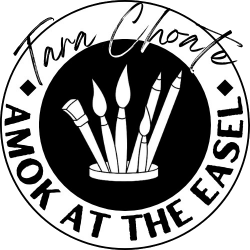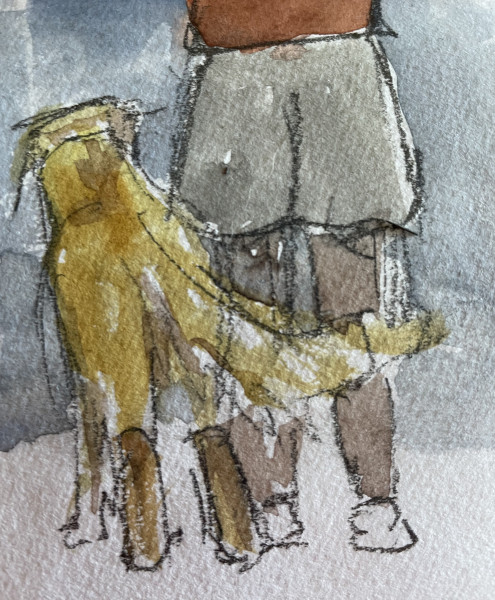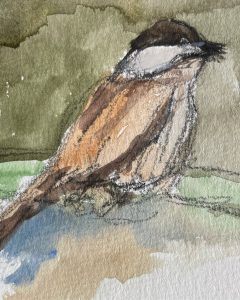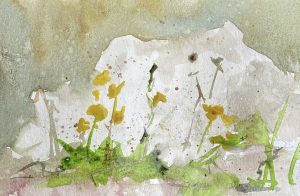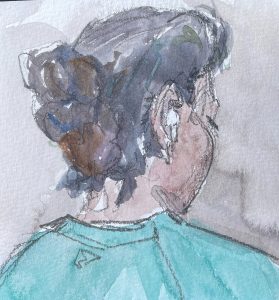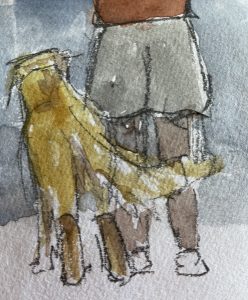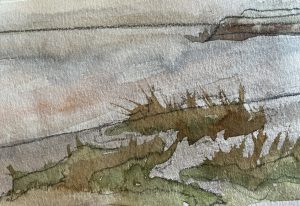Take a simple survey (this link will take you off this site.)
Style is a fairly encompassing term which can refer to several aspects of art. Style can mean the technique(s) used to create the artwork. Pointillism, for example, is a method of creating a painting by using small dots of color and allowing color blending to occur within the viewer’s eye. Style can refer to the basic philosophy behind the artwork, for example, the ‘art for the people’ philosophy behind Arts and Crafts movement. Style can also refer to the form of expression employed by the artist or the characteristic appearance of artworks. Metaphysical Painting, for example, tends to be of classical architecture in distorted perspective, with incongruous objects placed around the image space, and an absence of people.
Post 2 on Style
When submitting to a juried show, it is usual for there to be a prospectus outlining the rules of the of the show. One of the most common phrases in these documents is “work must be original in its concept, composition and design” and/or “work must be the creation of the artist.” In the digital age–where anyone can snap a photo at a moment’s notice, then dress it up with filters–what does that mean? In the context of thousands of years of art, is there anything that’s new? As early as the mid-10th century BC, when Ecclesiastes was written, there was doubt. “Is there a case where one can say, ‘Look, this is new’? It has already existed in the ages before us.” Ecclesiastes 1:10. Yet there can be no doubt that some artists are recognizable at a glance. Why? Or more importantly, how?
It’s been a busy summer, and for the last few weeks painting has taken second (or third) place to a variety of other concerns. To get myself motivated, I signed up for the September STRADA challenge. The goal is to paint (in any media) from life for each of the 30 days of September. “Working from life does NOT include working from TV, Zoom, or a computer screen. It is not necessary to complete your piece in one day; however, there must be a noticeable difference in the work between days and each day must be from life.” I have attempted this challenge in 2013 and 2020, but I have yet to be successful. There is always a lot going on. For this year’s attempt, I assembled a TINY little kit (not including water bottle it fits in a 6″x8″x2″ bag) and grabbed a small (3″x8″) watercolor journal book and resolved to paint between the “after work dog walk” and when I fed the dog. (For the record, Key feels there is FAR too much time between these events. 20-30 WHOLE minutes.) Obviously, these pieces are tiny. They can’t go into an exhibition, and few people would purchase a piece less than 12 square inches. So… why do it?
To be a painter, one must apply paint to a surface. To be a good painter, one must apply soul to your painting. Because I am doing this challenge just for me (unless you could the social media posting, which is part of the rules) I’m not terribly concerned about much except finding something that intrigues me enough to paint it. In this challenge, I am trying to avoid paintings things “because I should.” For example, every time I see a dock with a bunch of sailboats, I feel this compulsion to take a reference photo. I don’t even like boats much. But there are SO many beautiful paintings of water and docs and boats and sails that it’s all I can do not to snap a shot and think, “I should paint that someday.”
Subject is a big part of an artist’s style. Monet and his waterlilies. Georgia O’Keeffe and her flowers. Vermeer and his interior scenes. Style is obviously more than subject, but the artist must find something in the subject to interpret.
An artist friend and I sometimes talk about various shows. In the course of these discussions, it is rare for us not to comment on a piece of work that was “obviously done in a workshop” and/or paintings that were “copied from a photograph.” Neither are hanging offences, but they do seem to violate the prospectus limits mentioned at the beginning of this article. In the photo below, taken at a Bev Jozwiak workshop, the participants were given a photo to work from. You can see differences in color choice and composition, but are any of them really unique?

Similarly, even if someone painstakingly copies a reference photo into watercolor, how is it any different than creating a digitized work and sending it to be mass printed on canvas? (Note: This is NOT to say that digital art is not worthwhile/good/valid; it’s just an extra challenge to make a piece that someone doesn’t think they can do in Photoshop.)
I hope you’ve taken the survey at the start of this article. I have no plans to do anything with the information, I just wondered which element of an artist’s style triggered you to make a piece your own.
